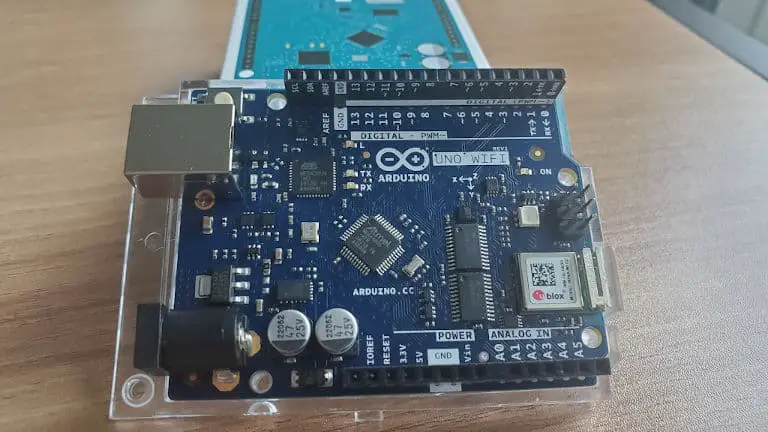

This port can be used to power the device from the 5V supply. USB B-port–The USB Interface is used to plug in the USB cable. Note: Above 12 volts, the board may overheat and below 7 volts, the voltage might not be sufficient to power the board. The board can be powered by an adapter that ranges between 5-20 volts but the manufacturer recommends keeping it between 7-12 volts. The barrel jack is usually connected to an adapter.
#ARDUINO UNO SPECS CODE#
It’s recommended to press this button every time we flash the code to the board.Īrduino UNO Power Supply pinout: Barrel jack, USB port, and Vin Pinīarrel Jack – The Barrel jack or DC Power Jack is used to power the Arduino board using an external power supply. RESET Button–It is used to reset the board. It provides the basic timing and control to the board. Even if there are any fluctuations in the input supply voltage of the regulator, the output voltage remains constant and near 5 volts.Ĭrystal Oscillator– The Crystal oscillator has a frequency of 16MHz, which provides the clock signal to the microcontroller. The primary use of a voltage regulator is to control the voltage level in the Arduino board. Voltage Regulator-The voltage regulator converts the input voltage to 5V. Regulator, Oscillator, and Reset button: Regulator, Oscillator, and Reset Button The picture given below is the Arduino UNO Pinout / Pin diagram: Arduino UNO pinout It consists of 6 analog inputs, 14 digital input/output pins(of which 6 can be used as PWM outputs), a 16 MHz ceramic crystal resonator, a USB-B port, an ICSP header, a power jack and, a reset button. The easiest development environment is the Arduino IDE.
#ARDUINO UNO SPECS SOFTWARE#
Like all Arduino boards, we can program the software running on the board using a language derived from C and C++. Atmega 328P based Arduino UNO pinout and specifications are given in detail in this post.īoth Atmega328 and ATmega4809 have a built-in bootloader, which makes it very convenient to flash the board with our code. The Arduino Uno is an open-source microcontroller board that is based on the Microchip ATmega328P (for Arduino UNO R3) or Microchip ATmega4809 (for Arduino UNO WIFI R2) micro-controller by Atmel and was the first USB powered board developed by Arduino.


 0 kommentar(er)
0 kommentar(er)
